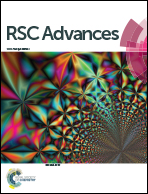On the origins of the elasticity of cellulose nanofiber nanocomposites and nanopapers: a micromechanical approach
Abstract
Cellulose nanofibrils (NFCs) are slender nanoparticles with outstanding mechanical properties that are used to enhance the mechanical properties of polymer nanocomposites and to fabricate dense and transparent nanopapers. However, the reinforcing effect of these nanoparticles is not as efficient for the elastic properties as expected from the classical models for polymer composites or fibrous materials. In this study, nanocomposite films made of TEMPO-oxidized NFCs and polyethylene oxide (PEO) were prepared by varying the NFC content over a wide range. The structural properties of these materials were characterized using AFM, TEM, SEM-FEG and XRD. These techniques showed that NFC nanocomposite films and nanopapers consisted of dense networks of tortuous NFCs with planar and random orientations. DMA experiments also revealed that the cohesive bonds between NFCs greatly contributed to the overall elastic response of these nanocomposites, even for low NFC contents. Based on these observations, we report an original multiscale network model that describes the elastic properties of NFC nanocomposites and nanopapers where the governing deformation mechanisms occurred at the numerous bonds between NFCs and in the NFC kinked regions, whereas the crystalline NFC regions were considered to be rigid bodies. This approach led to the formulation of an analytical expression for the stiffness tensors of NFC nanocomposites and nanopapers and revealed the effects of the network structure on their mechanical responses. The model predictions were satisfactory over the range of investigated NFC contents. In particular, this model showed the predominant role of the amorphous regions on the elastic response, whereas the contribution of the NFC–NFC bonds became significant at high NFC contents.


 Please wait while we load your content...
Please wait while we load your content...